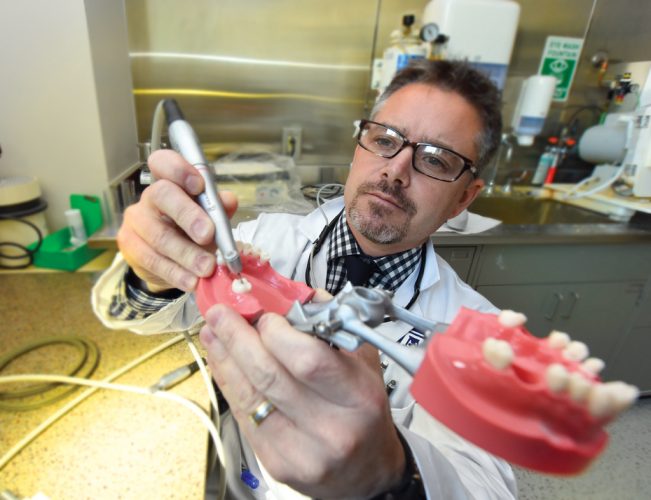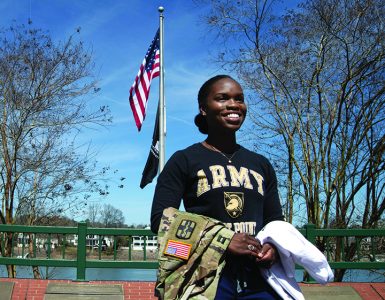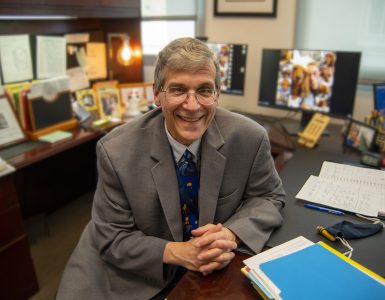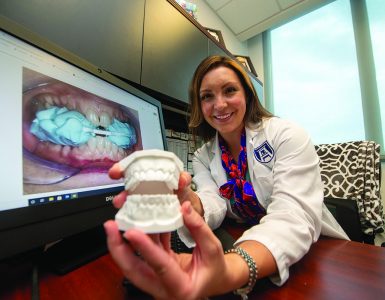Efficiency has always been a hallmark of Dr. Alan Furness’ career.
Furness, assistant dean of patient services and associate professor of restorative sciences, ran a private practice in Charleston, South Carolina, before joining the DCG faculty eight years ago, keeping a dozen or so balls in the air at any given time. When he wasn’t treating patients, he was mastering new technology, updating his computer system or tending to the myriad details involved in running a business. Naturally, he brought his do-it-now attitude along for the ride.
He’s thrilled that the DCG is just as committed to efficiency as he is, and never before has that commitment been so easy to fulfill. Furness is on the front lines of incorporating digital dentistry into the curriculum.
Digital dentistry is any technology or device that incorporates digital or computer-controlled components into the profession, as opposed to mechanical or electric components alone. Examples include computer-aided design/manufacturing, intra-oral imaging, computer-aided implant dentistry, digital radiography, extra-oral and intra-oral photography, practice and patient record management, digital patient education and shade-matching.
Benefits include improved efficiency, accuracy and predictability. “We can build processes and evaluate outcomes before they’re delivered,” says Furness. “For instance, we can virtually build a restoration for a tooth and identify any weak areas before touching the patient. And even before production begins, we’re able to identify any potential problems.”
Much of this happens behind the scenes, but patients are well aware of the added efficiency. “We can build a crown in two hours that before would have taken two weeks,” says Furness. “Digital dentistry often enables one-visit dentistry.”
And patients aren’t the only beneficiaries of digital technology. DCG students receive unparalleled training about the technology they will incorporate into their practices. “We’re making sure that we not only have the technology, but that we’re able to teach it,” Furness says. “We’re teaching students to think through all the processes virtually and how to push a case through the digital workflow. It’s a good bit different from conventional workflows, but it’s everywhere now, so they need to know it before they begin their careers.”
Furness is gratified that the DCG is on the cutting edge of this new frontier. “We’re definitely poised for the future,” he says.










